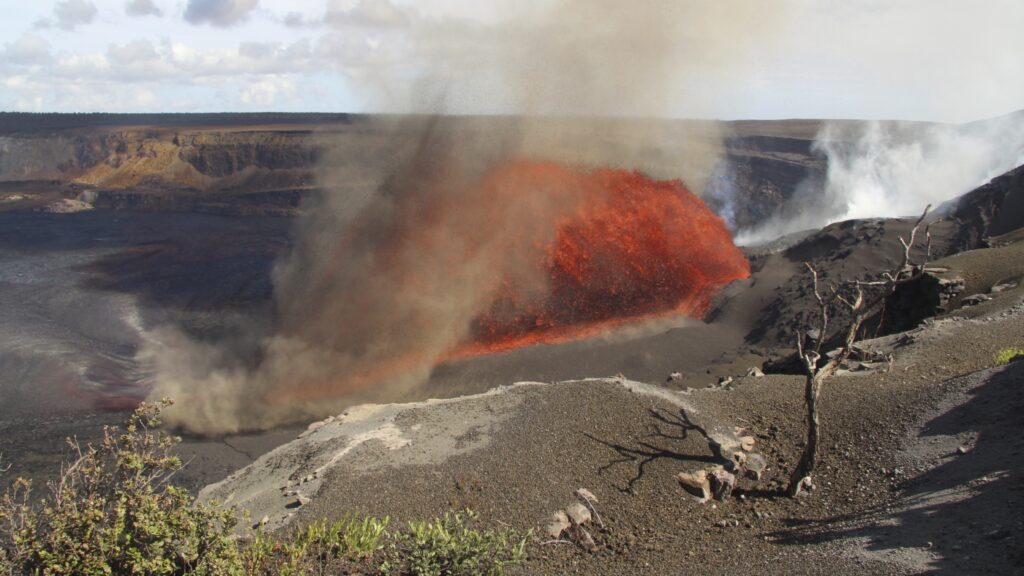Hawaii’s Kilauea volcano erupted on August 22, 2025, launching lava fountains up to 100 feet. This marked Kilauea’s 31st eruption since December, showcasing its status as one of the world’s most active volcanoes. The eruption originated from the north vent of the Summit Crater, producing dramatic displays of molten rock while remaining contained within the crater, posing no threat to nearby homes.
Residents and visitors at Hawaii Volcanoes National Park witnessed this spectacular event, with live streams available through US Geological Survey cameras. The eruption is fueled by magma from deep within the Earth, creating expansive lava fountains as gas escapes and pressure builds. Historically, similar eruptions have occurred, including notable episodes in 1959 and 1969.
Scientists are uncertain about the eruption’s future, as past episodes have led to continuous lava flows or cessation. The eruption has drawn increased park visitation, highlighting both its natural beauty and the need for caution due to volcanic hazards. Cultural perspectives emphasize the significance of lava in Hawaiian tradition, as reflected in local practices and storytelling.
Source link


